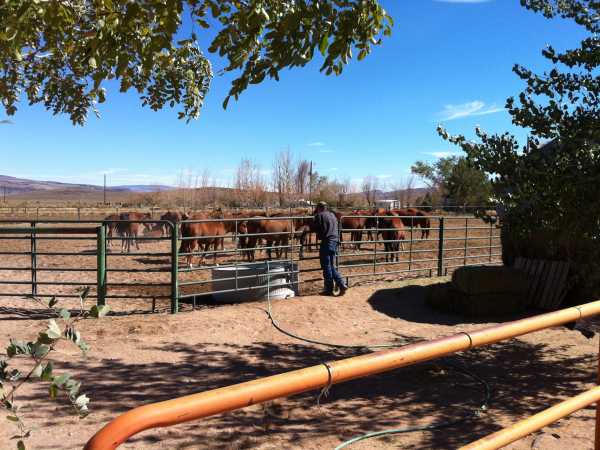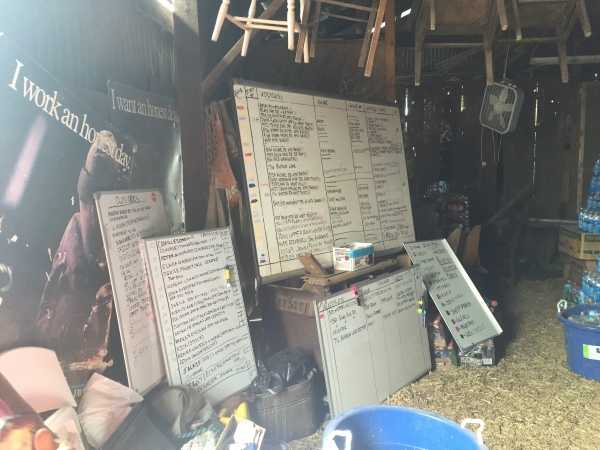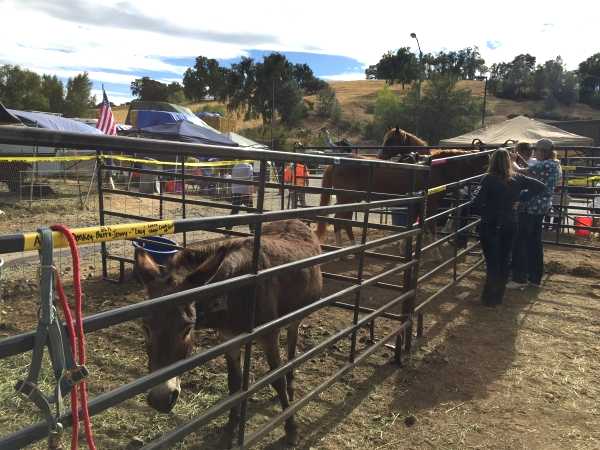|
This feature is a continuation of Part Nine.
Local stakeholders may not preplan to become a temporary large animal shelter, but may suddenly decide to make their acreage available when they recognize the need. Hopefully the owner would have first contacted local Incident Command or the Emergency Coordination Center to get connected, authorized, and to receive some guidance and assistance prior to announcing their intentions on social media. Uncoordinated good intentions can at times contribute to chaos.
On the Incident Command side of this issue, there has to be functioning and identifiable system in place, perhaps seeded through stakeholder outreach, where "pop up" resources can expediently be connected with an appropriate level within Incident Command. If Incident Command is not immediately responsive, citizens tend to take matters into their own hands at which point Incident Command will lose oversight, coordination and control over increasing numbers of activities taking place within the operational area.
Most large animals evacuated from small acreage tend to be horses, but other livestock and even poultry may need sheltering, or someone may be raising rabbits in their back yard. Various domestic animal species need different types of safe confinement from portable kennels to various forms of fencing. Some animals have special needs. Not all shelter locations are suitable or prepared to shelter all types of animals, but preplanning can improve the ability to adapt to serve local needs.
Common primary large animal shelter sites would include fairgrounds, rodeo grounds, or other larger facilities used regularly for activities involving large amounts of livestock kept in pens on the premises, usually with room to add portable pens. Issues such as proximity to the incident, road access, water, power and types of structures available must be considered as well as useful equipment that may be on site that could be made available for shelter use and operations.
Emergency planners in the operational area might also actively seek and identify larger acreage facilities (such as horse training or boarding facilities) in less vulnerable locations where an alternate emergency or overflow large animal shelter might be set up, and discuss that potential with facility owners. If agreement is reached, such locations should be listed in emergency operations plans with appropriate site and contact information. A general layout of each facility and proposed shelter layout could be included. An area map showing various confirmed and potential large animal shelter locations would be a very useful reference. Resource lists should be reviewed and updated as needed.
A boarding stable riding arena used for immediate intake. These horses ultimately had to be
sheltered for several months, requiring corral panels and related equipment to be brought in, the
animals sorted into compatible groups and development of a reliable "supply chain" for feed.

The emergency planning strategy for large animal shelters should consider population densities of large animals in different areas of the jurisdiction and have at least a couple of primary and alternate shelter sites pre-identified across the operational area.
Even with such preplanning, the need for spontaneous shelters may arise as the incident’s need for evacuation evolves or access to predesignated shelters becomes problematic. The preplan would have trained staff assigned to primary shelter locations, but how well would alternate sites likely manage as effective shelters if people there had little or no training to perform that function? A trained and experienced shelter management team may not be available. Therefore some form of pre-planned support system needs to be in place before the emergency event.
Small capacity shelter locations can function with small staff and keep basic records maintained for each animal, but they will still need to periodically communicate with appropriate incident authorities for assistance as needed for additional feed, water or other supplies. Larger shelter operations require more planning, organizing, anticipation of needs, more personnel, consistent processes and procedures, management with related records, more formal veterinary and farriery arrangements, and regular communication with incident points of contact as evacuation and sheltering needs evolve.
Emergency planners for the operational area can help prevent chaos and confusion by developing some guidance and tools to provide to “spontaneous” or prearranged large animal shelter operations that could be anticipated to shelter large numbers of animals so they could operate more effectively. This preplan could include providing some guidelines – a basic Standard Operating Guide - on shelter layout considerations and operational issues with some "How To" instructions and examples. Such resources should include printable forms and electronic database files for to provide necessary documentation. Included should be pertinent information such as contact phone numbers to connect with persons in the incident command structure who can provide additional guidance and arrange for additional equipment, supplies and services. This shelter guide and related files could be provided as an email with links to files to download, or on a delivered thumb drive. The files would include basic databases for records and printable forms that perhaps can also be used as data entry in the spontaneous shelter’s computer. There may be issues for software or other functional compatibility that could potentially be addressed in the initial design and development.
Auxiliary volunteers, members of mounted SAR and posse units, credentialed evac team members and CERT volunteers could receive basic training on how to effectively support sheltering operations and serve as resources to assist spontaneous sheltering volunteers in shelter organizing and operations. These individuals could also serve as liaisons between these ad hoc shelters and Incident Command, sources of needed resources, and Animal Services agencies that may be tasked with tracking evacuated livestock and reuniting them with owners.
Emergency planners for the operational area could even provide a laptop and portable printer (and paper) with the appropriate files, or deliver a more complete starter kit to get the spontaneous volunteer or alternate shelter management personnel functioning and communicating with designated supervisors (including providing appropriate radios or other devices in order to stay in communication with pertinent incident personnel.) The starter kit could also include some initial supplies likely to be used during shelter operations. Such supplies could include standardized printed forms, clipboards and writing implements and other supplies described recommended in the Shelter Guide. Thoughtful planning of starter kit contents might include less obvious items such as power strips for powering or charging various devices.
The various databases and forms for spontaneous shelters should be the same as those used in preplanned shelters and evacuation operations. Every form and database should be self-explanatory with respect to the file name, title, and actual use. If necessary, some basic instructions can be included on the forms. An untrained person should be able to use the forms with essentially no prior training, with minimum "real time" instruction.
Any shelter should also be prepared to maintain manual records so all forms and databases should be designed to also be printed for clipboard written data entry, or have a version of that form or database that is designed to be printed to produce "hardcopy" records.
Accurate record keeping is important. At Laughton Ranch activities were logged on
status boards as well as on laptop computers in the ranch's "Operations Room." Other
details such as veterinary records were maintained "real time" on individual clipboards.

New groups of trained volunteers or an appropriate agency within an anticipated operational area can contact experienced large animal evacuation and shelter groups for guidance on forms, databases, etc. Some existing sources may be willing to share their files, to be adapted for local use. A newly formed volunteer group may not have members possessing the skill sets needed to develop suitable forms and databases and may need assistance. Assistance may also be needed to develop appropriate organizational documents, requirements for member training, approved attire, etc.
Some shelter locations may simply be available as a site, with the owner unable to provide much in personnel to manage or staff a shelter operation. The sheltering element of an Incident Action Plan may include deployment of someone capable of establishing functional shelter management and operations at such a location, ideally equipped with the shelter management and operations starter kit. Once the methods and procedures are established, individuals reporting to the improvised site, including reliable spontaneous volunteers, can be trained to sustain effective operations.
Incident Command should develop and to provide all spontaneous shelters with contact lists that are relevant to the incident. Such lists can help facilitate increased efficiency on the part of shelter operators and encourage these operations to operate "within the system."
© 2017 Least Resistance Training Concepts. All rights reserved.
Permission to use content and images for non-commercial purposes.
| 




